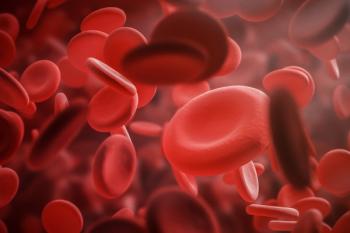
Growing standards boost pharmacy practice
Practice standards and innovation are the chicken and egg of health-system pharmacy practice. For regulators, more demanding standards of practice are the impetus behind innovations that improve patient care and outcomes. Joint Commission standards, for example, are designed to improve patient care and patient outcomes. The commission doesn't care how health systems meet new practice standards, just that the standards are met, noted commission surveyor Darryl Rich.
On the other side of the fence are pharmacy providers. They see practice standards as a constant struggle to catch up with practice innovations that improve patient care and outcomes. "Our goal is to be the innovator and set the standards that others adopt," said Kasey Thompson, Pharm.D., director of practice standards and quality at ASHP. "The most effective standards are the ones developed by expert practitioners," he said.
"Prior to board of pharmacy regulation with enforceable standards, patient care varied dramatically from institution to institution," said Carmen Catizone, R.Ph., executive director of the National Association of Boards of Pharmacy. "The introduction of standards has led to more uniformity of patient care and at a higher level of care."
Individual health systems can adopt bedside bar-code systems, but adoption remains a matter of professional pride, a desire to do what is best for patient care, economics, and peer pressure. Standards created by associations are usually goals, not minimum requirements. "We have been advocating for these kinds of changes in practice for years," Thompson said. "The unfortunate reality is that adoption too often waits for patient harm and widespread adverse publicity. There are many best practices that have not been adopted by regulators."
Bark or bite?
Joint Commission standards are just as enforceable. And while standards imposed by pharmacy boards may vary from state to state, Joint Commission standards are uniform across the country. Missing a standard such as failing to assess patient pain or continuing to use certain drug-related abbreviations will not bring a fine, Rich said. But health systems that miss too many standards can lose access to the Medicare program, patients, and payments. About 85% of U.S. hospitals use Joint Commission accreditation as a substitute for direct inspection and accreditation by the Centers for Medicare & Medicaid Services.
Only 1% to 2% of health systems lose their accreditation and CMS eligibility annually, Rich noted. But that small percentage is sufficient to keep compliance levels high. "Once we have a standard, pharmacy and other departments don't really have any choice about compliance," Rich noted. "There are many routes to compliance, and we don't prescribe any particular method, but there must be compliance."
From problem to standard
Implementing new standards does tend to improve the level of care provided by health-system pharmacies, but the creation of new standards is a complex and often a delicate dance among practitioners, pharmacy organizations, and regulators.
"Standards lead practice, but standards derive from the experience of practitioners," said Michael Cohen, president of the Institute of Safe Medication Practices.
Newsletter
Pharmacy practice is always changing. Stay ahead of the curve with the Drug Topics newsletter and get the latest drug information, industry trends, and patient care tips.





















































































































































